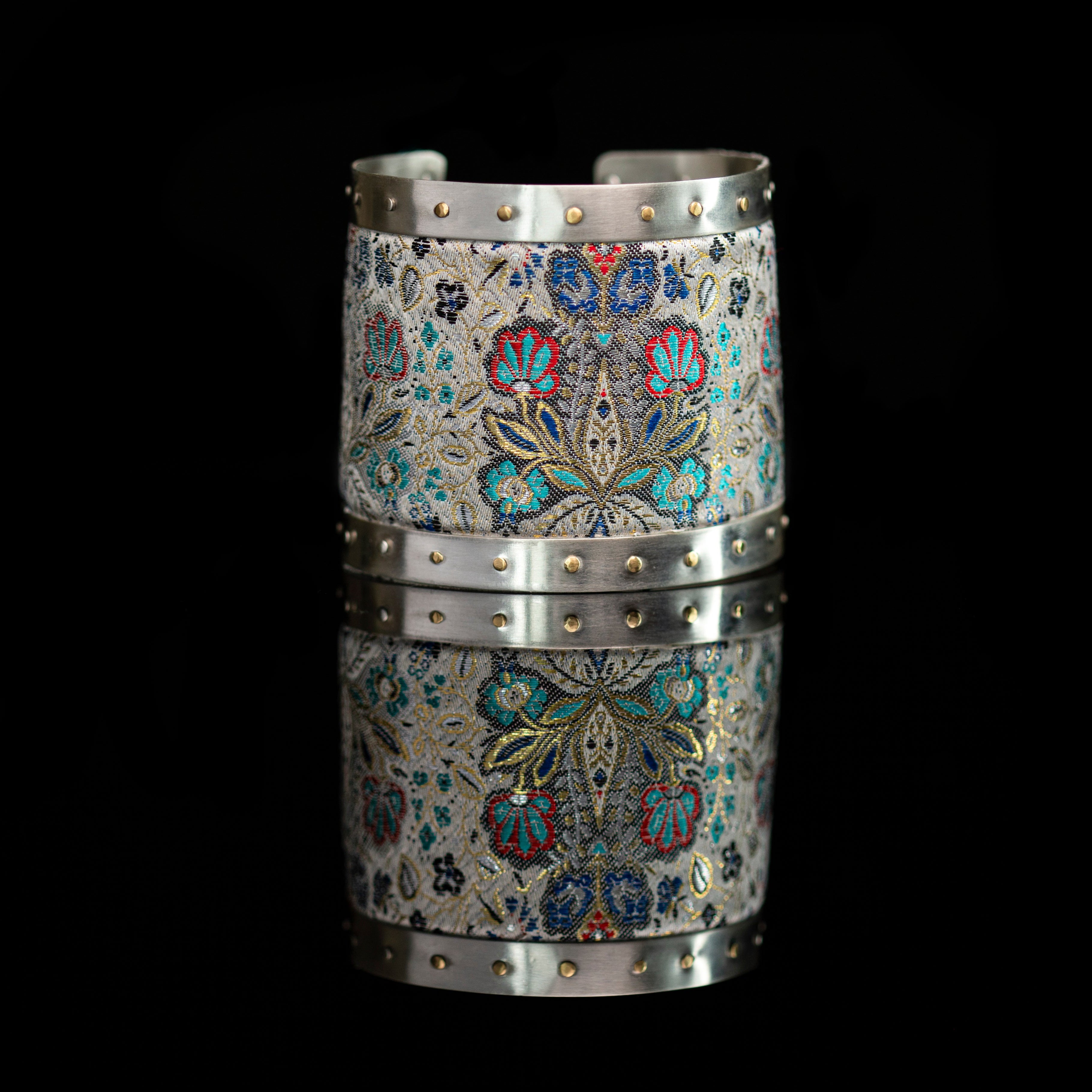البروكار الدمشقي Damask
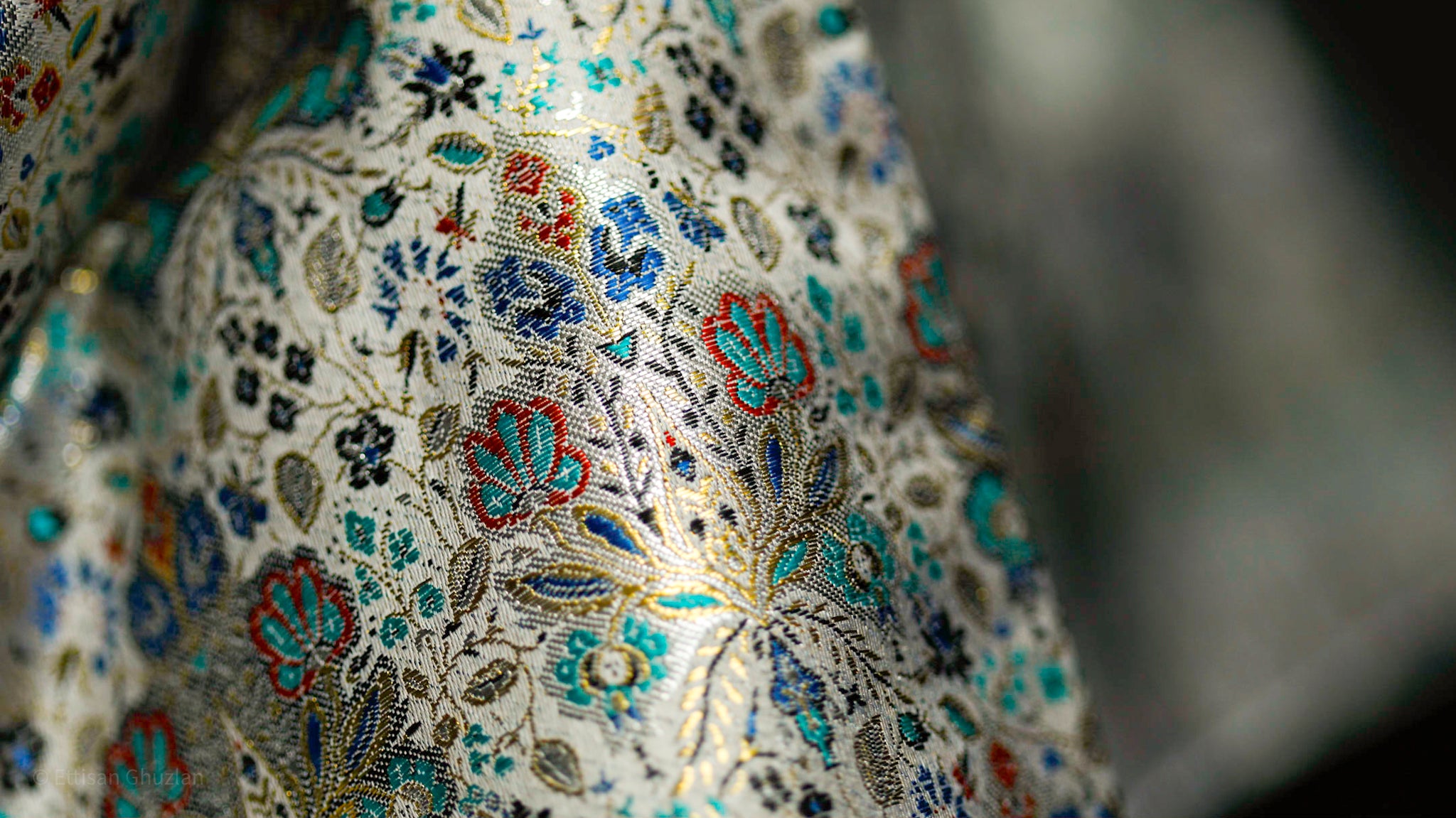
Damascene silk refers to a type of luxurious,
historically significant fabric associated with the city of Damascus in
Syria. While the term "Damascene" is most commonly associated with Damascus steel, a renowned metalwork tradition, it also applies to textiles, particularly silks that have been produced or influenced by the region.
Damascus has long been a centre of trade, art, and culture, and its textile industry dates back centuries. During the medieval and Ottoman periods, Damascene silk was highly valued for its fine quality, intricate patterns, and luxurious feel. Silk weaving in the region is believed
to have been influenced by both Byzantine and Persian weaving traditions.
Damascene silk is known for its brocade-like patterns, which are often woven into the fabric rather than printed or embroidered. These patterns can include floral, geometric, or arabesque designs, and they often feature a play of light and shadow on the fabric’s surface, creating a "damask" effect—hence the name. The fabric is typically woven with silk
threads on a silk or linen warp, sometimes using gold or silver threads to
enhance the luxury.
Historically, Damascene silk would often be dyed in deep, rich colours like red, gold, and blue, which were associated with wealth
and nobility. The use of natural dyes, such as cochineal (for red), indigo (for blue), and saffron (for yellow), helped create a vibrant and striking appearance.
Damascene silk became an important part of the region’s cultural identity, particularly in the Islamic Golden Age, when Damascus was a leading cultural and commercial hub. The textiles were not only used for
clothing but also for decorating royal palaces, mosques, and other important buildings.
Over time, the production of Damascene silk declined due to a variety of factors, including political upheavals and the rise of industrial textile production. However, there has been a recent revival of interest in
these traditional weaving techniques, and some artisans in Damascus and surrounding areas are working to restore this heritage by hand-weaving modern versions of these iconic silks.
Today, Damascene silk is still prized for its beauty and craftsmanship, often used in luxury fashion, interior design, and high-end
accessories. It’s particularly sought after for traditional garments, wedding
dresses, and home décor items like cushions, curtains, and wall hangings.
The term "Damask" fabric (often associated with a reversible patterned fabric, typically made from silk, linen, or cotton) is
believed to be derived from Damascus, where this type of fabric was
originally produced. The term “Damask” is still used today to describe a
luxurious fabric with intricate patterns, often created through jacquard weaving.
Damascene silk represents a centuries-old tradition of luxurious,
intricately woven textiles. Known for its rich patterns and vibrant colours, it has long been a symbol of wealth and cultural sophistication, making it a
cherished material both historically and in modern times.
The Essence of Damascus
C O L L E C T I O N
This collection brings together two
extraordinary elements:
the luxurious, hand-woven silk of ancient tradition and the refined artistry of
contemporary jewellery design.
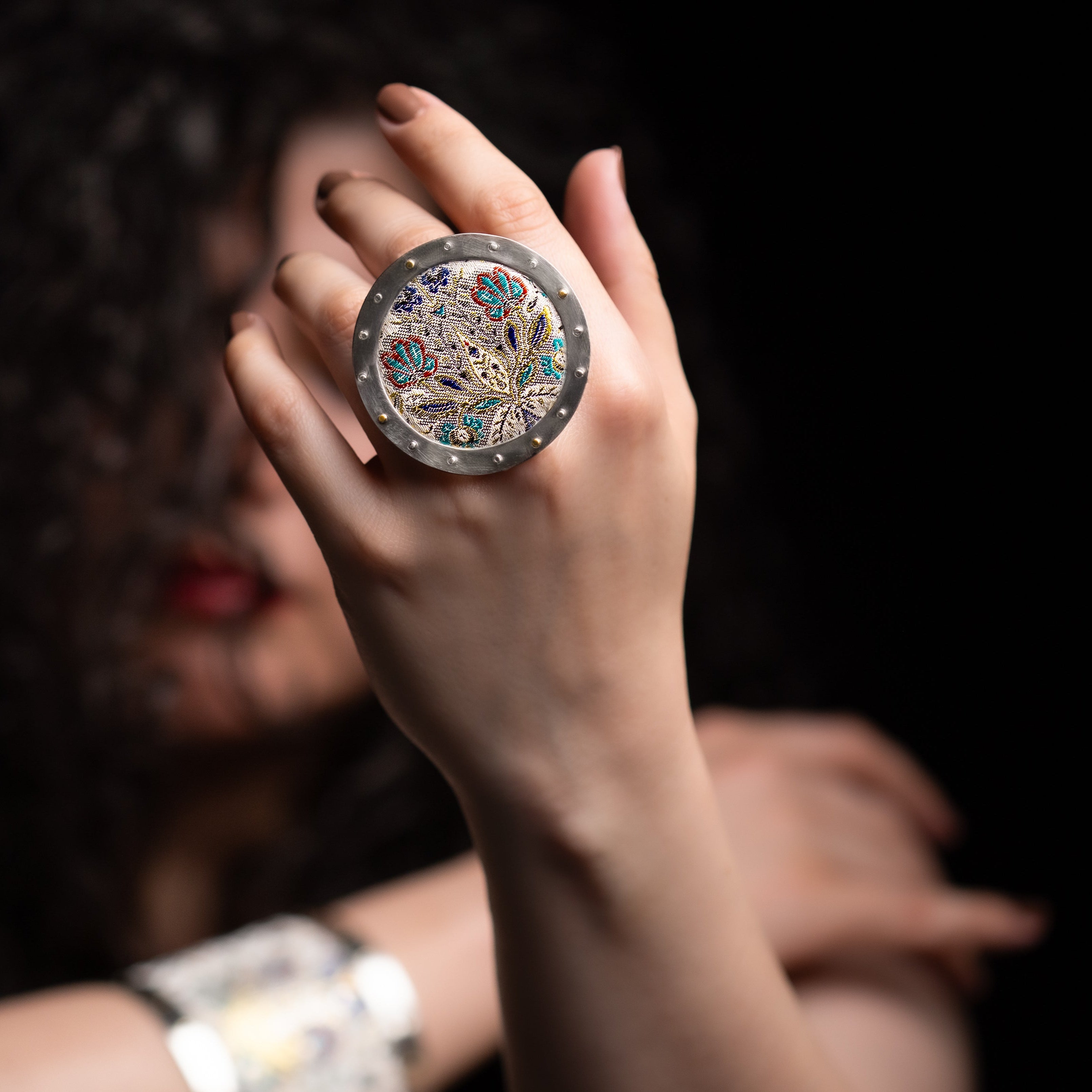
For centuries, Damascene silk has
been celebrated for its intricate patterns, vibrant colours, and unparalleled craftsmanship. Woven in the heart of the oldest capital in
the world, Damascus in Syria, it symbolised both wealth and artistry, and its use was
reserved for royal courts and sacred occasions.
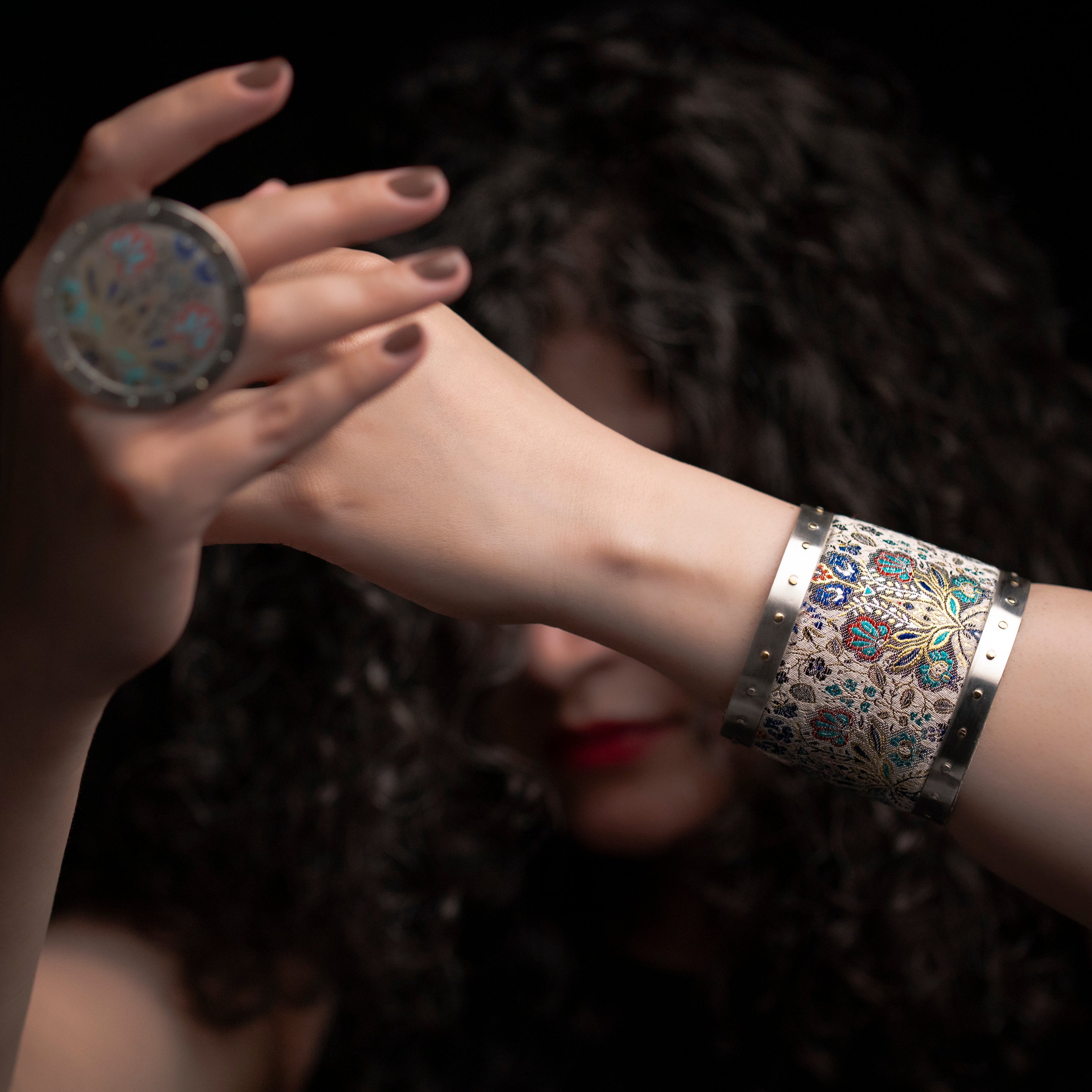
The art of weaving this
exquisite fabric was passed down through generations, making each piece a
testament to the mastery of artisans who transformed silk into living,
breathing works of art.
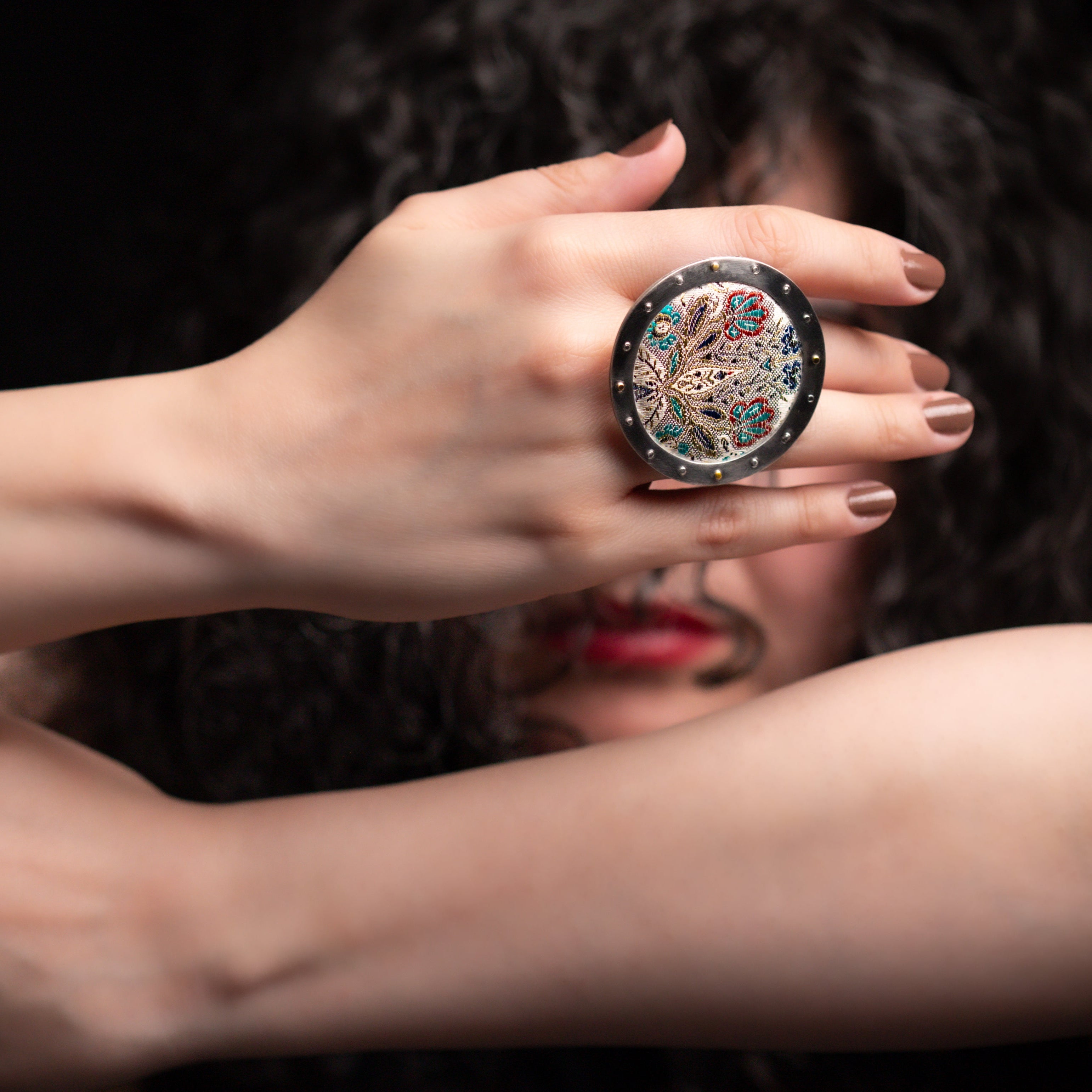
To own a piece from The Essence of Damascus is to hold a fragment of history—an embodiment of the culture, beauty, and artistry of a bygone era. The scarcity of Damascene silk today makes these jewellery
pieces even more rare and precious, offering you an extraordinary connection to a tradition that has withstood the test of time.
